Saving Angel+ a little history lesson
Time to take the Cat for a spin again. The Alphasim one that is! Such an excellent plane the cat...A spin around the Golden Hawaii
The Catalina was created under the guidance of the brilliant aero-engineer Isaac Macklin Laddon. The new design introduced internal wing bracing, which greatly reduced the need for drag-producing struts and bracing wires. A significant improvement over its predecessors, it had a range of 2,545 miles, and a maximum take-off weight of 35,420 lbs. In 1939 the Navy considered discontinuing its use in favor of proposed replacements. The Catalina remained in production, however, because of massive orders placed by Britain, Canada, Australia, France, and the Netherlands. These countries desperately needed reliable patrol planes in their eleventh-hour preparations for WW II. Far from replacing the PBY, the Navy placed its largest single order since WW I for an aircraft.
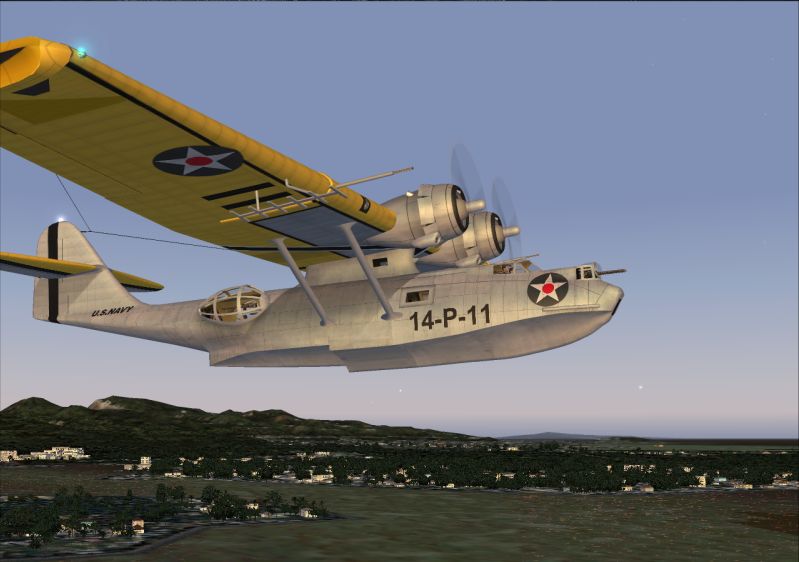
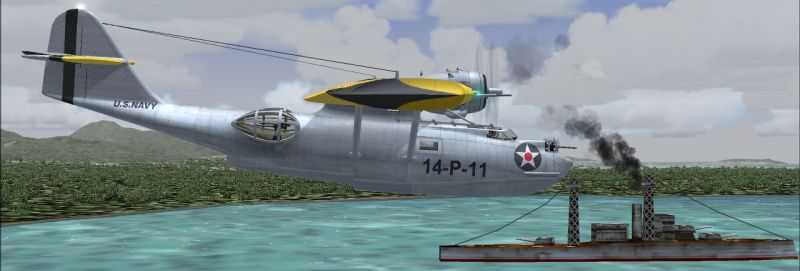
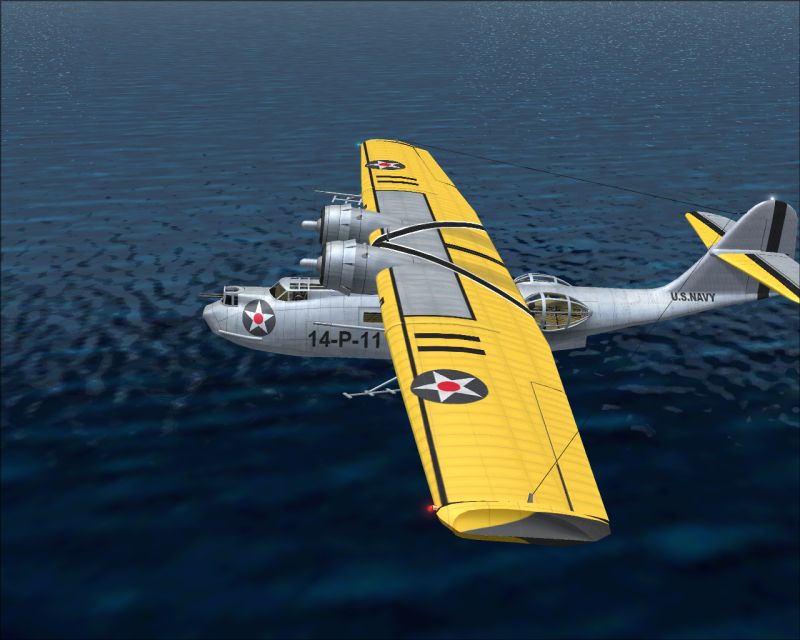
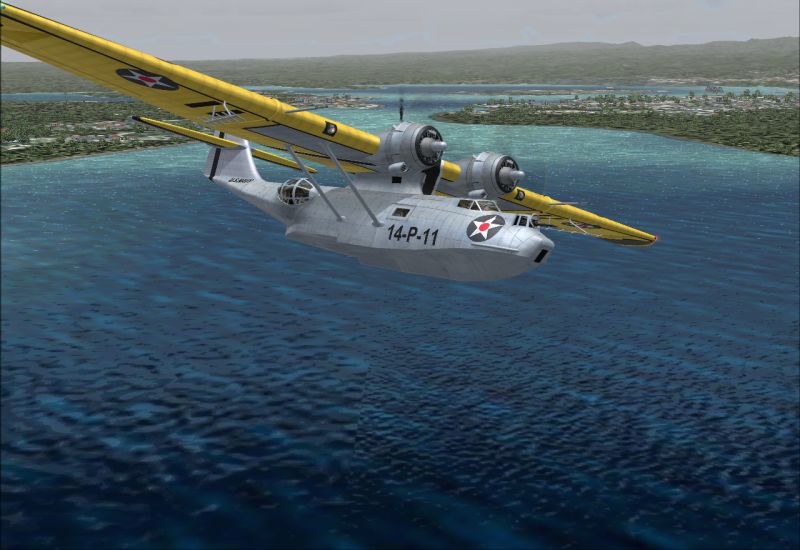
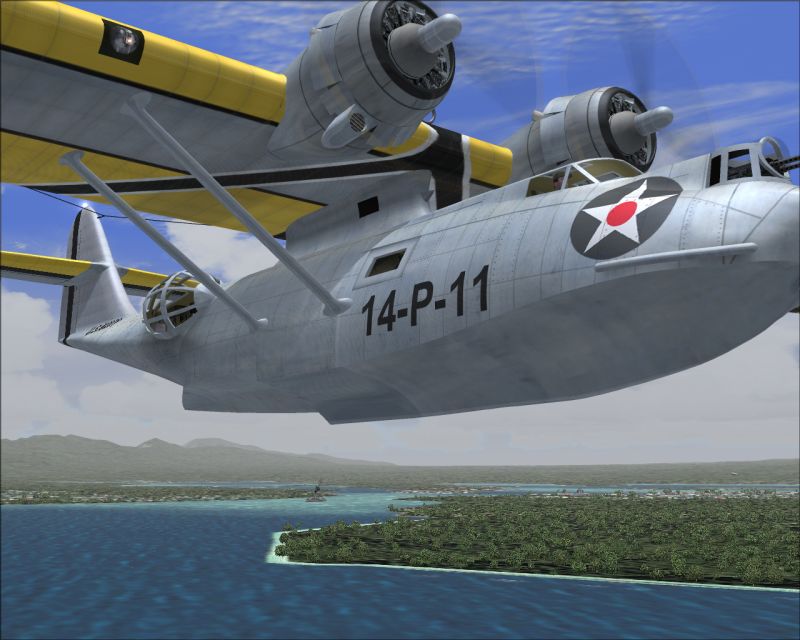

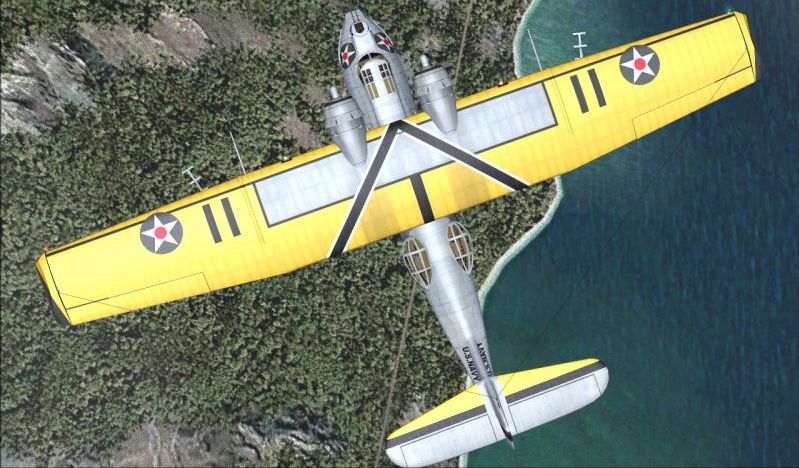
Over the years, numerous improvements were made to the design. An amphibious version, the PBY-5A, was developed in 1939, through the addition of a retractable tricycle undercarriage. The PBY-6A featured hydrodynamic improvements designed by the Naval Aircraft Factory. The Soviet Union produced a license-built version for their Navy called the GST and powered by Mikulin M-62 radial engines. Boeing Aircraft of Canada built the PB2B-1 and PB2B-2 ("Canso"), and a derivative of the PBY-5A was built by Canadian Vickers. In US Army Air Force service, the aircraft was known as the OA-10A (PBY-5A) and OA-10B (PBY-6A). The Royal Air Force's Coastal Command flew Catalinas under the designations Catalina Mk I/II/III/IV.
A total of approximately 4000 Catalinas were built between 1936 and 1945. Because of their worldwide popularity, there was scarcely a maritime battle in WW II in which they were not involved. The PBY had its vulnerabilities: it was slow, with a maximum speed of 179 mph, and with no crew armor or self-sealing tanks, it was highly vulnerable to anti-aircraft attack. However it was these weaknesses, coincident with the development of effective radar, and Japanese reliance on night transport, which led to the development of the "Black Cat Squadrons." These crews performed nighttime search and attack missions in their black-painted PBYs. The tactics were spectacularly successful and seriously disrupted the flow of supplies and personnel to Japanese island bases. The Catalinas also proved effective in search and rescue missions, code-named "Dumbo." Small detachments (normally of three PBYs) routinely orbited on stand-by near targeted combat areas. One detachment based in the Solomon islands rescued 161 airmen between January 1 and August 15, 1943, and successes increased steadily as equipment and tactics improved. After WW II, the PBY continued its search and rescue service in many Central and South American countries, as well as in Denmark, until the 1970's.
Specifications (PBY-5A):
Engines: Two 1,200-hp Pratt & Whitney R-1830-92 Twin Wasp radial piston engines
Weight: Empty 20,910 lbs., Max Takeoff 35,420 lbs.
Wing Span: 104ft. 0in.
Length: 63ft. 10.5in.
Height: 20ft. 2in.
Performance:
Maximum Speed: 179 mph
Long-Range Cruising Speed: 117 mph
Ceiling: 14,700 ft.
Range: 2,545 miles
Armament:
Five 7.62-mm (0.3-inch) machine guns
Up to 4,000 pounds of bombs or depth charges
The bold text explains what the Black cat was for since I remember someone showing a particular interest for the black cat. And I didn't know what it was for.
My grandfather loved these when he flew on them. I love this one too and I'm going to save up to posibly take a ride on the dutch one!
The plane truely is an angel in every aspect!
The Catalina was created under the guidance of the brilliant aero-engineer Isaac Macklin Laddon. The new design introduced internal wing bracing, which greatly reduced the need for drag-producing struts and bracing wires. A significant improvement over its predecessors, it had a range of 2,545 miles, and a maximum take-off weight of 35,420 lbs. In 1939 the Navy considered discontinuing its use in favor of proposed replacements. The Catalina remained in production, however, because of massive orders placed by Britain, Canada, Australia, France, and the Netherlands. These countries desperately needed reliable patrol planes in their eleventh-hour preparations for WW II. Far from replacing the PBY, the Navy placed its largest single order since WW I for an aircraft.







Over the years, numerous improvements were made to the design. An amphibious version, the PBY-5A, was developed in 1939, through the addition of a retractable tricycle undercarriage. The PBY-6A featured hydrodynamic improvements designed by the Naval Aircraft Factory. The Soviet Union produced a license-built version for their Navy called the GST and powered by Mikulin M-62 radial engines. Boeing Aircraft of Canada built the PB2B-1 and PB2B-2 ("Canso"), and a derivative of the PBY-5A was built by Canadian Vickers. In US Army Air Force service, the aircraft was known as the OA-10A (PBY-5A) and OA-10B (PBY-6A). The Royal Air Force's Coastal Command flew Catalinas under the designations Catalina Mk I/II/III/IV.
A total of approximately 4000 Catalinas were built between 1936 and 1945. Because of their worldwide popularity, there was scarcely a maritime battle in WW II in which they were not involved. The PBY had its vulnerabilities: it was slow, with a maximum speed of 179 mph, and with no crew armor or self-sealing tanks, it was highly vulnerable to anti-aircraft attack. However it was these weaknesses, coincident with the development of effective radar, and Japanese reliance on night transport, which led to the development of the "Black Cat Squadrons." These crews performed nighttime search and attack missions in their black-painted PBYs. The tactics were spectacularly successful and seriously disrupted the flow of supplies and personnel to Japanese island bases. The Catalinas also proved effective in search and rescue missions, code-named "Dumbo." Small detachments (normally of three PBYs) routinely orbited on stand-by near targeted combat areas. One detachment based in the Solomon islands rescued 161 airmen between January 1 and August 15, 1943, and successes increased steadily as equipment and tactics improved. After WW II, the PBY continued its search and rescue service in many Central and South American countries, as well as in Denmark, until the 1970's.
Specifications (PBY-5A):
Engines: Two 1,200-hp Pratt & Whitney R-1830-92 Twin Wasp radial piston engines
Weight: Empty 20,910 lbs., Max Takeoff 35,420 lbs.
Wing Span: 104ft. 0in.
Length: 63ft. 10.5in.
Height: 20ft. 2in.
Performance:
Maximum Speed: 179 mph
Long-Range Cruising Speed: 117 mph
Ceiling: 14,700 ft.
Range: 2,545 miles
Armament:
Five 7.62-mm (0.3-inch) machine guns
Up to 4,000 pounds of bombs or depth charges
The bold text explains what the Black cat was for since I remember someone showing a particular interest for the black cat. And I didn't know what it was for.
My grandfather loved these when he flew on them. I love this one too and I'm going to save up to posibly take a ride on the dutch one!

The plane truely is an angel in every aspect!



